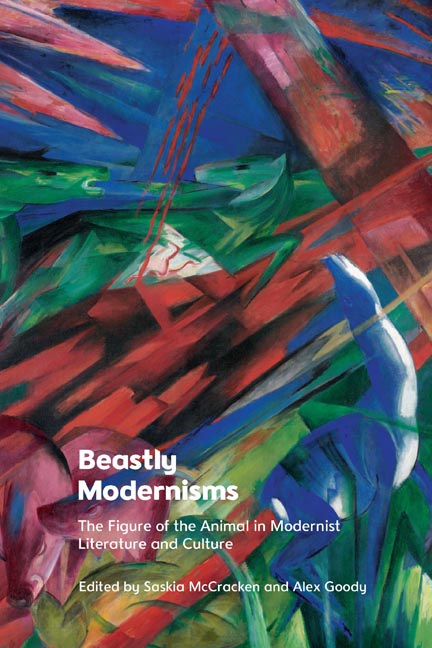Book contents
4 - Making an Impression Deeply: Authorising Animals in D. H. Lawrence
Published online by Cambridge University Press: 21 October 2023
Summary
In recent work on animality in modernism and in performance, I have been reframing aesthetic practice as a fundamentally more-than-human undertaking. In that work I assert that human creativity is only the most recent iteration of an artistic impulse that belongs to the living in general. Aesthetics from this perspective must be understood as bioaesthetics, wherein a ‘bio-impulse’ at the root of the aesthetic itself connects human artistic propensities to animality through strategies of excess, display, and intensification. This work of revising our understanding of creatural aesthetic capacities, of re-envisioning the aesthetic domain itself as transhuman in scope, is ethically charged because we must acknowledge the shared status of art-making, one of our most hallowed and formerly ‘exceptional’ activities. Thinking through the bioaesthetic powers of other animals has led me to consider the ways in which animals might be said to ‘authorise’ creative projects or practices. This discussion is thus a first step in thinking through what I am calling animal authority in literary and performative practices.
The idea of animals as authors, or as authorising, raises interesting questions about the qualities of authority that are called upon when animals become sources of sanctioning, knowledge or permission, and how those differ from human authorisations. Moreover, suggesting that animals might be authors in some way is more radical than suggesting that they can write or mark because it dares to view animals through a humanised lens of intention or purpose, however much we have problematised those categories as literary scholars. If we were to reframe something like Michel Foucault’s outlining of an ‘authorfunction’ in discursive practices to accommodate animal authority, the question of the author becomes a much more radically open question than Foucault could have anticipated (Foucault 1969). For instance, how do animal authorities affect the kinship between writing and death that Foucault and Roland Barthes have elaborated? What replaces the apotheosis of écriture in an animalised framework? Is it Jacques Derrida’s animot? Is it a zoopoetics that bears witness to humans’ entanglement with life, as a repressed or disavowed given of writing?
- Type
- Chapter
- Information
- Beastly ModernismsThe Figure of the Animal in Modernist Literature and Culture, pp. 75 - 90Publisher: Edinburgh University PressPrint publication year: 2023



